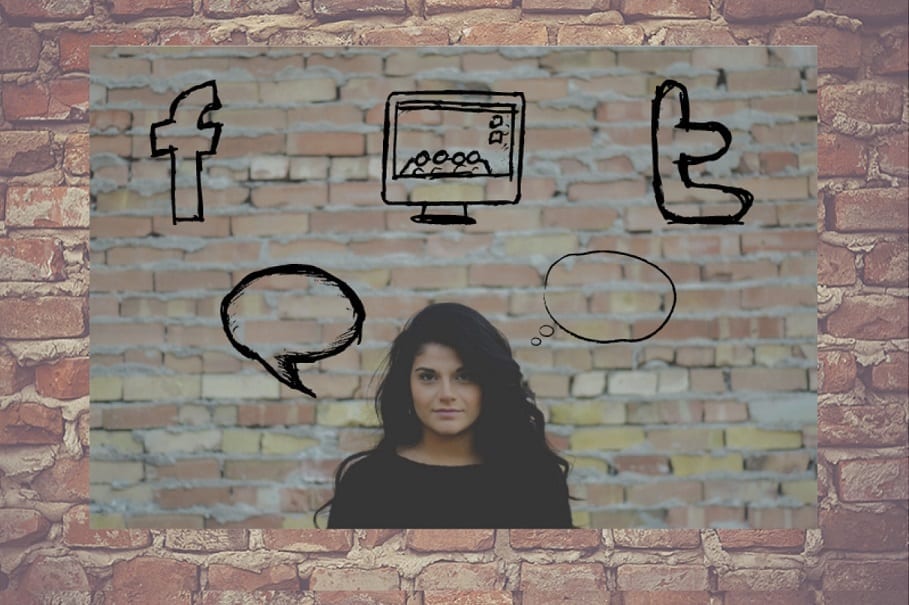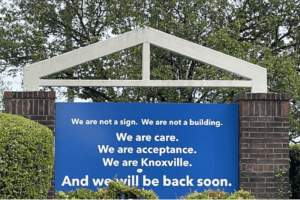Does it end?
The list of powerful men accused of sexual harassment or assault continues to grow. What do we do about it? Who is responsible for change?

By now, the majority of us are well aware of the flood of sexual harassment accusations against dozens of well-known men in the entertainment industry. The New York Times reported in October that Hollywood producer Harvey Weinstein had reached settlements with at least eight women in the past, regarding accusations of sexual misconduct and harassment. 83 women have now come forward to say that Weinstein acted inappropriately toward them.
But the reports haven’t stopped at Weinstein. With the re-introduction of the #MeToo hashtag – started by activist Tarana Burke a decade ago, and gaining attention when actress Alyssa Milano tweeted the tag following publication of the Times article – it became clear that this is a much bigger problem than anyone had anticipated.
Björk, an Icelandic singer, songwriter, producer and actress known globally for her avant-garde style, was just one industry member who disclosed via social media that she, too, had been victimized.
in the spirit of #metoo i would like to lend women around the world a hand with a more detailed description of my…
Posted by Björk on Tuesday, October 17, 2017
The list of survivors in Hollywood, female and male, goes on and on: Reese Witherspoon, America Ferrera, Lady Gaga, Gabrielle Union, and Molly Ringwald, to name a few. Terry Crews has also openly discussed the negative impact that harassment has had on him.
The list of incriminated men is incredibly long, too. Danny Masterson, Hollywood actor. Matt Lauer, television news reporter for NBC News. Charlie Rose, television host and reporter for CBS, PBS and Bloomberg LP. Russell Simmons, cofounder of the Def Jam record label. Louis C.K., comedian. Michael Oreskes, NPR news chief.
These are only a handful of those affected by allegations, whether making or facing them. Some individuals have admitted to acting inappropriately (apologies were later issued by Louis C.K. and Charlie Rose, for example), but the stories keep coming, and are not limited to Hollywood. Former Chief Justice and Republican nominee for U.S. Senate Roy Moore has also recently been accused by multiple women of harassment.

Following the thousands who have used the #MeToo hashtag to talk about their experiences with abuse and harassment are several women in powerful government positions, including four United States Senators: Elizabeth Warren (D-Mass.), Claire McCaskill (D-Mo.), Mazie Hirono (D-Hawaii) and Heidi Heitkamp (D-N.D.).
Those who are able are continuing to talk about those experiences, which often happen at work and which they must often brush off. But here’s the thing: the harassment is not limited to awkward hugs or inappropriate shoulder rubs from a boss. And although women most often face these sorts of abuse, they are not the only ones suffering.
As a male childhood rape survivor who has gone public and had so many disclose to me, I promise: any rape stat you see is low. #MeToo
— Barry Crimmins (@crimmins) October 15, 2017
Lest anyone think these reports are a fluke, the Center for Disease Control and Prevention found that in 2011, nearly 20 percent of U.S. women had been raped at some point, and roughly 43 percent had survived some other type of sexual violence. That translates to numbers into the millions (mouse over chart for more exact figures).
In much the same way that these affronts are not isolated to one kind of assault, they are not isolated to one country. A survey from the European Union Agency for Fundamental Rights found that in 2011, nearly half of French, Finnish and German women have experienced some form of physical or sexual violence. A quarter or more of women in nearly every other member country of the European Union reported the same (mouse over map for exact figures by country).
Might these incidents be driven less by actual sexual desire, and more by the desire to exert power? That would likely explain why so many assaults occur while in the process of a job interview or a meeting with a professional superior, and why those accused are often in higher-level positions of authority.
Plenty have been told to pull themselves up by their bootstraps and become independently successful. That independence is the path to the American Dream. However, becoming self-reliant, and thus powerful, takes time and work. What price do these survivors pay to get there? Must they endure the Weinsteins, the Roses, the Mastersons and all the others to get ahead?
For many, the answer is “yes.” Socioeconomically disadvantaged individuals in particular – mostly women, but some men as well – such as single mothers or women of color, might be left with no other choice than to accept harassment for the sake of supporting their families and themselves. Not everyone has the ability to go to college, or to seek out a job at which they can be free from unwanted sexual advances.
And what do we think is happening to girls and young women, especially girls of color, immigrants & LBQ/GNCT youth, in low-income situations, unstable families, and on the streets? #UsToo https://t.co/Othx9vkq6U
— National Crittenton (@NatlCrittenton) November 29, 2017
Ideally, those experiencing or at risk of harassment or abuse could “save themselves” via independence, or by removing themselves from the situation. Unfortunately, to suggest such a solution in the real world is to let predators off the hook, and to oversimplify an immensely complicated problem.
It has been established that gender roles and power dynamics enforced through societal norms encourage sexual aggression. It has been shown over and over again that many men feel entitled to forcing sex with a woman if he thinks that she has “led him on.”
Why has society established these norms in the first place? Why has it taken so long for these issues to get noticed, and why must it fall to survivors to call for change via the #MeToo movement?
Most importantly – what do we do about it?



